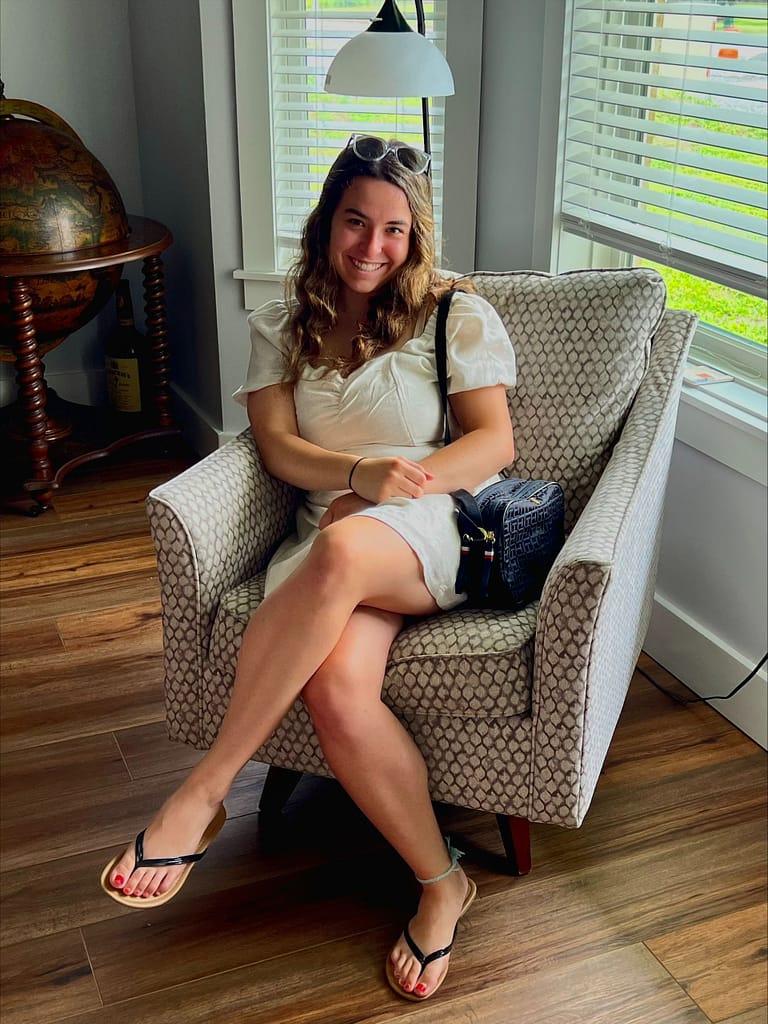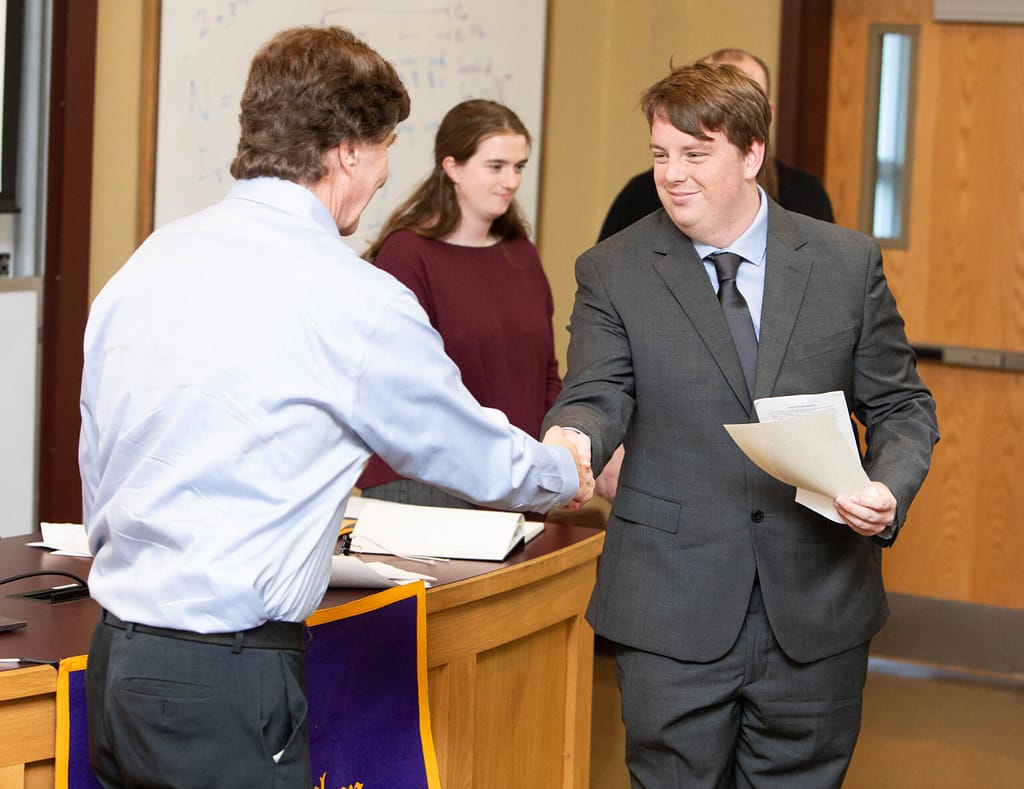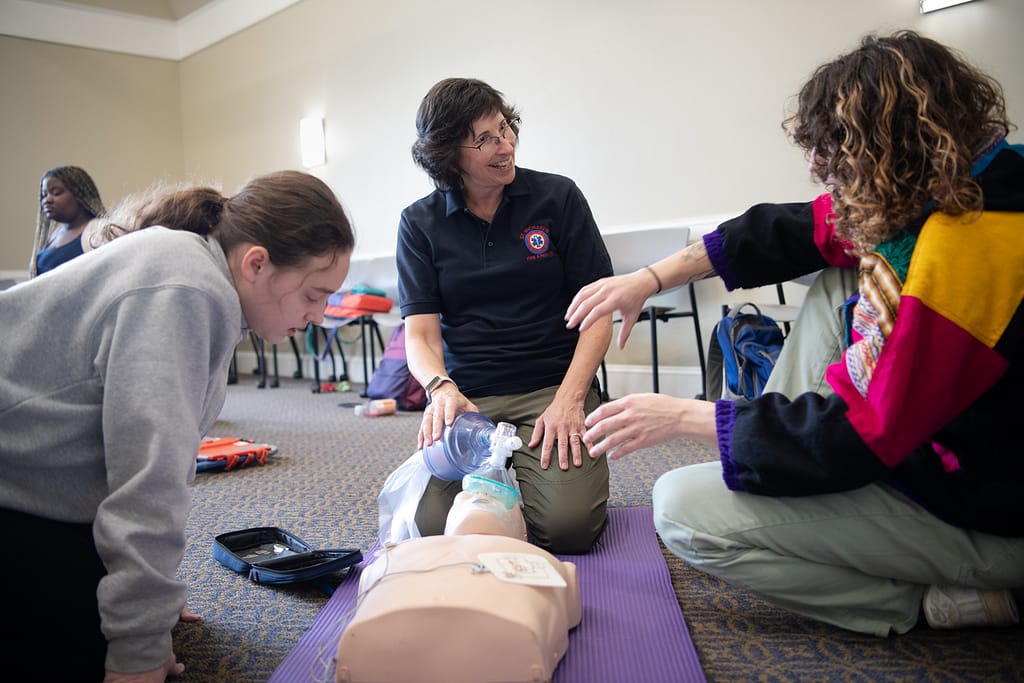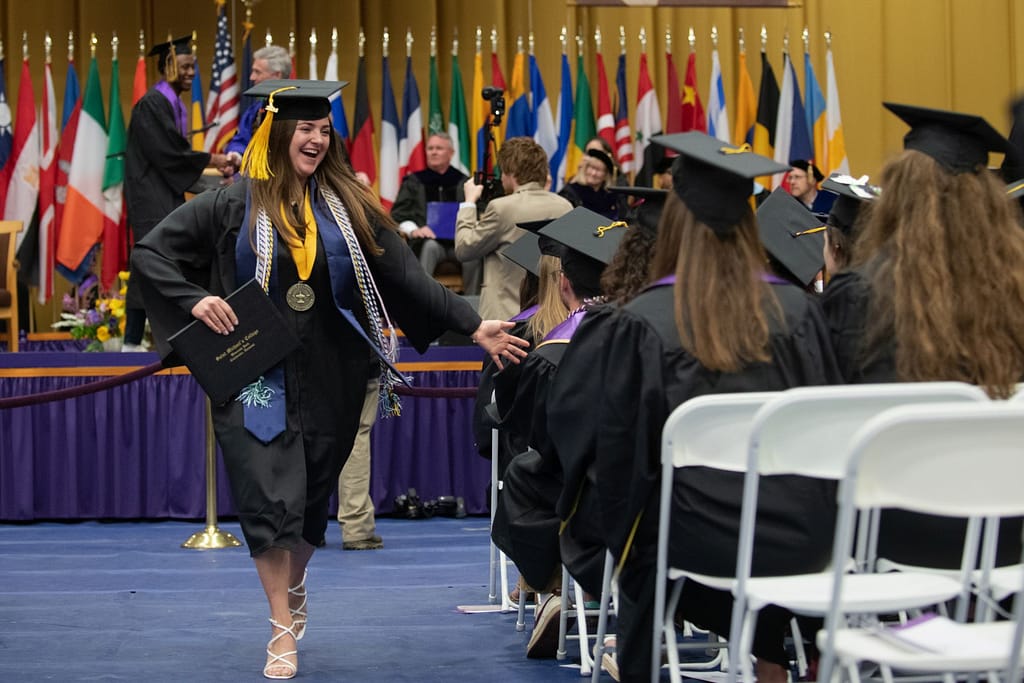Revolutionary War re-enactors bring history to life on Saint Michael’s campus
The past came to life on Saint Michael’s campus on Oct. 5 when a group of Revolutionary War re-enactors set up camp to help the college community time-travel to 250 years ago.
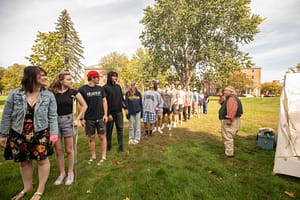
Students participated in militia drills. Photo by Cat Cutillo
Campus community members and visitors stopped by to talk to the re-enactors who portrayed Patriot soldiers and early Americans through clothing, militia drilling, food, herbalist practices, lifestyle and materials. Others watched the unique display from afar with curiosity and amusement.
Alexandra Garrett, who is an Assistant Professor of History at Saint Michael’s, was responsible for bringing the re-enactors to campus after seeing them perform at the Ethan Allen Homestead Museum where Garrett is a board member. The group was part of Benjamin Whitcomb’s Independent Corps of Rangers, a non-profit corporation in Vermont comprised of volunteers who re-create a war camp unit that fought in the Revolutionary War as a part of the Continental Army in New England and New York.
Garrett is teaching a survey course called “America to 1865” which is a chronological survey from the 1580s to the end of the Civil War. Her class is currently focused on the American Revolution.
“I wanted my students to come outside of the classroom and come outside of the textbook and actually learn about how early Americans would have lived their life during the 1700s,” said Garrett. “What I really hope is that history becomes alive and literally tangible for them.”
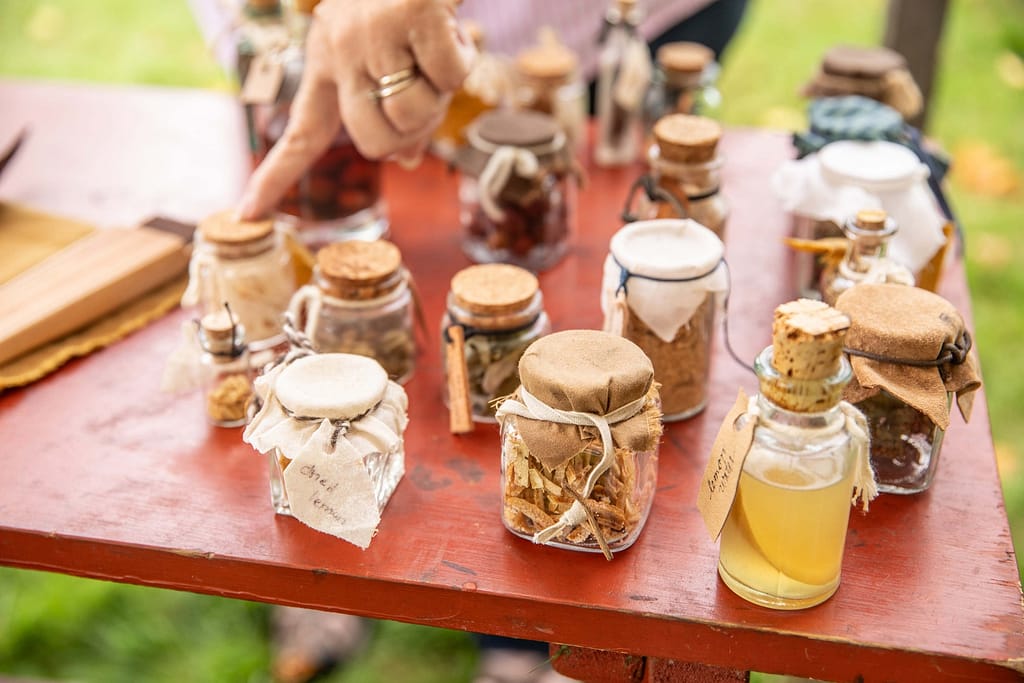
Re-enactors shared herbalist practices of early Americans. Photo by Cat Cutillo
Living history
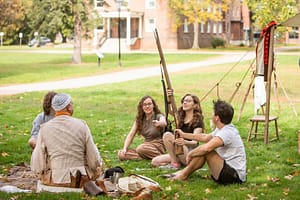
Students felt the weight of muskets. Photo by Cat Cutillo
Students held 1800s-era replica muskets and musket balls. No guns were fired, but students felt the weight of the muskets, performed military drills and entered a cramped tent where soldiers would have lived.
The three women re-enactors showed off the expandible clothing women wore, which was designed for pregnancy. The audience learned it was common for women to become pregnant every two years, bearing 10 or more children. Since elastic was not yet invented, women relied on a handwoven narrow tape and pins to expand and contract their limited wardrobes. One re-enactor demonstrated weaving the tape on a tape loom during the event.
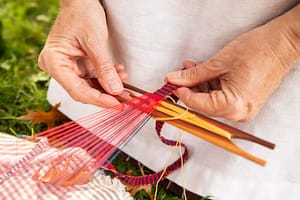
A demonstration of weaving tape on a tape loom. Photo by Cat Cutillo
Re-enactors explained that early Americans did bathe regularly but did not wash their hair frequently, so women wore caps to keep their hair in place. These caps were designed differently depending on a woman’s age.
“I learned if you were a younger woman back in early America, you’d have a bigger frillier cap as a flirtatious device to gentlemen callers who might pass your way,” Garrett said. “Whereas, if you were an older woman, your cap would be a little bit more demure…because if you’re married you don’t need to be flirting with your cap like that anymore.”
Another flirtation device was pockets.
“Even though people might never see them, I might want my pockets to be really pretty for the same reason I buy Victoria’s Secret,” re-enactor Pamela Monder explained.
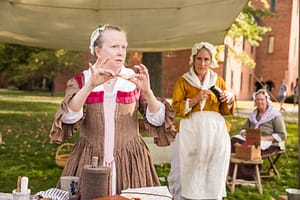
Re-enactors talked about the most important utensils for early Americans. Photo by Cat Cutillo
Students were introduced to a throw-and-catch lawn game called “Graces” and a board game from the time. An herbalist table was set up with spices representing 18th century cooking. Most of the spices came from New England but some were from other parts of the world to represent trade. Dandelion roots, which were made into a tea, could be used for indigestion and Queen Anne’s Lace was used for birth control.
“Eighteenth century birth control. Did it work really well? People had 10, 12 kids. You tell me,” Monder joked.
A collection of cookbooks was passed around and Monder highlighted some recipes that had peculiar titles like “The Spotted Dog” and “The Drowned Baby.” There was even a recipe for how to treat a dog bite.
One student asked why everyone was carrying a knife around their waist.
“If you’re going to have any utensil at all, you will have a knife because it’s so functional,” Monder said. “The second one you’d want is a spoon. The fork is frivolous. It’s not necessary.”
One re-enactor portraying a blacksmith passed around materials that were popular in the 18th Century such as rope and the book “Woodstock” written by Sir Walter Scott. The re-enactor explained that everyone in the 18th Century recycled. Leftover walnuts were used to dye dresses. Scraps of rope and the leftovers from fabric spinning could be used to start fire.
“We’re taking waste from one project and using it for something else,” he said. “Recycling is a really basic theme in 18th century life.”
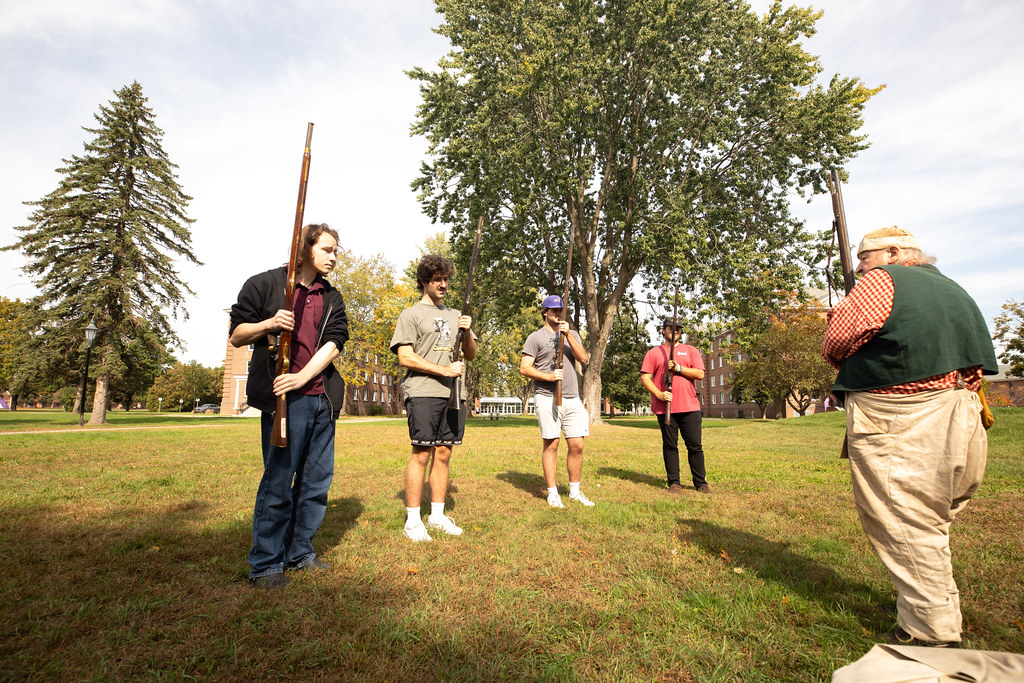
An unforgettable experience
At the end of their visit, students agreed that having the past at their fingertips helped take their learning to a new level.
“You get to see that slice of life of people living the history and not just reading it through a textbook,” Cassie Wardwell ’25 said.
“I think it’s really cool,” Andrew Reynolds ’27 said. “It’s a lot of history at once and you can actually visualize it.”
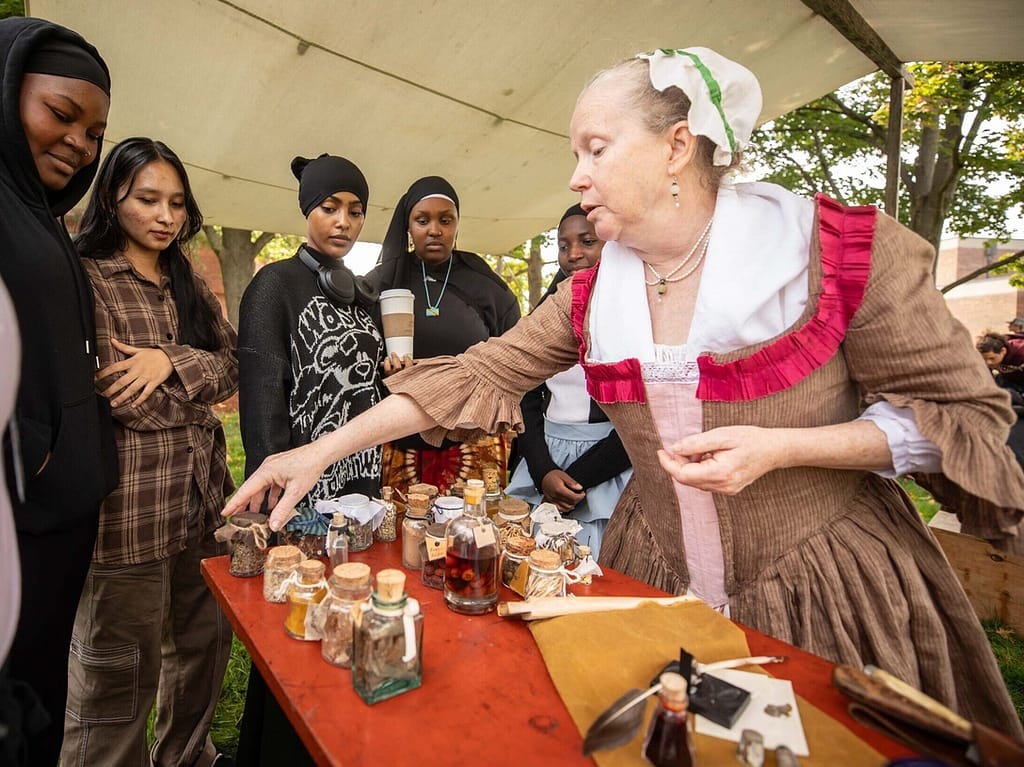
Visitors from Winooski High School came to campus. Photo by Cat Cutillo
Added Brandon Boris ’24, “It was truly something that I don’t think I’ll forget. Seeing how these people lived their lives and then thinking about how I live my life, it was very interesting. It spurred a lot of thought in my head.”
Garrett said she hopes to make the reenactment a yearly component for students.
“I want to show my students that early American history is in the past, but we can make it come alive today,” Garrett said. “There’s no better way to show how history included real people than to have real people try to act like historical people.”
Monder, who retired last year as an educator at the Community College of Vermont, said that reenactment is a family hobby she became passionate about when her own two children were younger. It was a way to deepen their understanding of history. Monder said she hopes to have passed on the same lessons to the people here at Saint Michael’s.
“What I always hope students will take away if they come to visit this, is that we were people in the 18th century,” she said. “We lived and loved and laughed the same way that everybody does today. It wasn’t just about the men with the powdered wigs, and it’s not about the battles. It’s about the people that were making their homes in the wilderness and raising their families and trying to build a life.”


